
Scan QR code
Biaxial geogrid is a type of plastic geogrid, which is formed by extruding, forming plates, punching, and then stretching vertically and horizontally from a polymer polymer. The Biaxial geogrid has great tensile strength in both longitudinal and transverse directions, and this structure can also provide a more effective chain system for bearing and diffusing forces in soil
Width: 1-6 M
Material: HDPE/PP
Customization:
The width, tension, etc. can be customized according to customer requirements.
Function:
Suitable for various embankment and roadbed reinforcement, slope protection, tunnel wall reinforcement, as well as permanent bearing foundation reinforcement for large airports, parking lots, docks and freight yards.
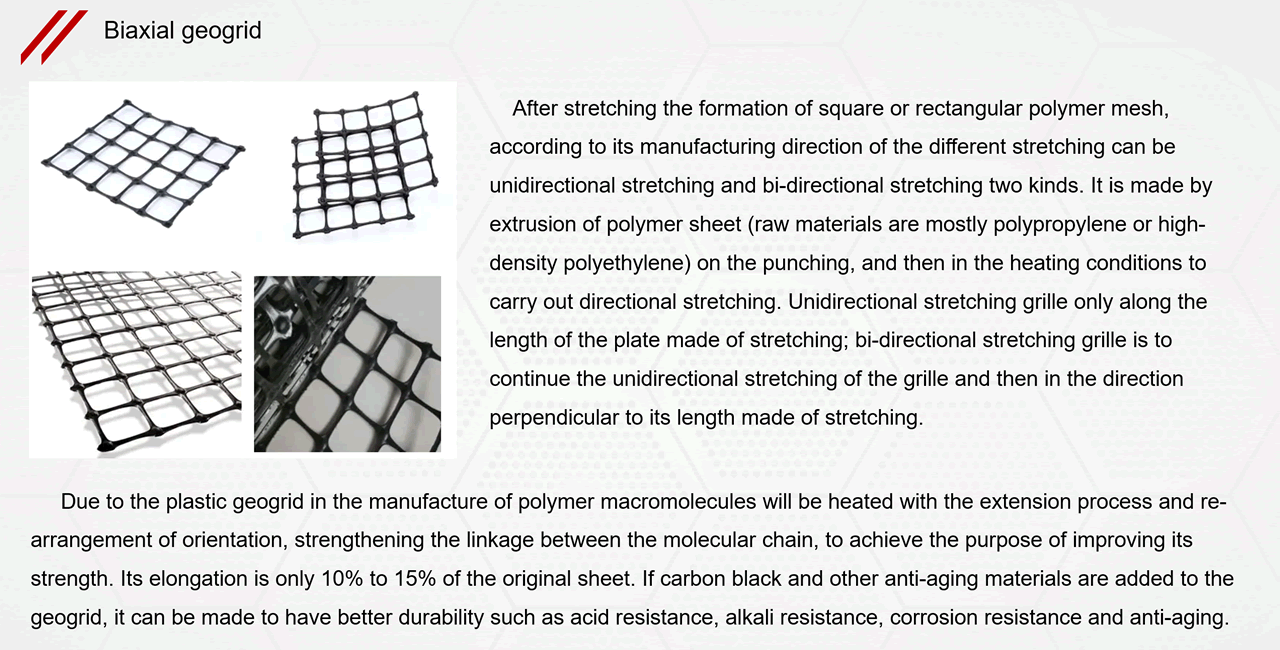
Enhancing bearing capacity
Strengthening the roadbed can effectively distribute diffusion loads, improve the stability and bearing capacity of the roadbed, and extend its service life
Prevent roadbed deformation and cracking
Prevent road (ground) surface collapse or cracking, and maintain a beautiful and tidy ground
Improve efficiency
Convenient construction, time-saving, labor-saving, shortened construction period, and reduced maintenance costs
Cost saving
Enhance soil slopes and prevent soil erosion< Reduce the thickness of the cushion layer and save costs
Supporting effect
Supporting the stability of slope planting with grass mesh mats for greening the environment. It can replace metal mesh and be used for underground false roof mesh in coal mines
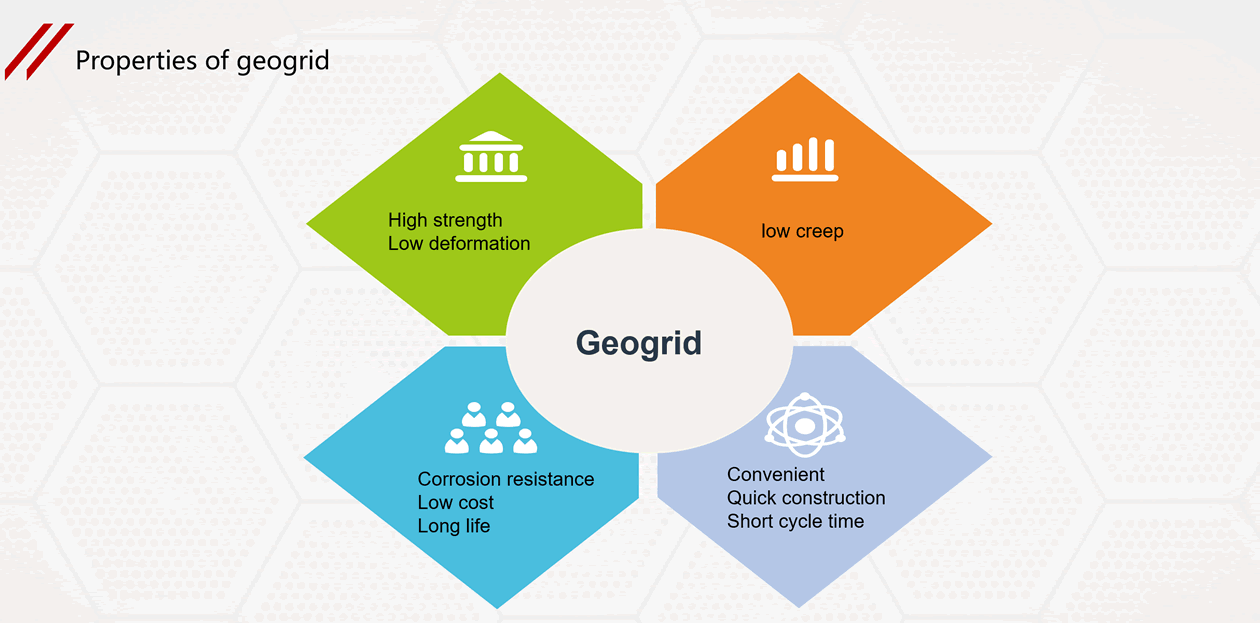
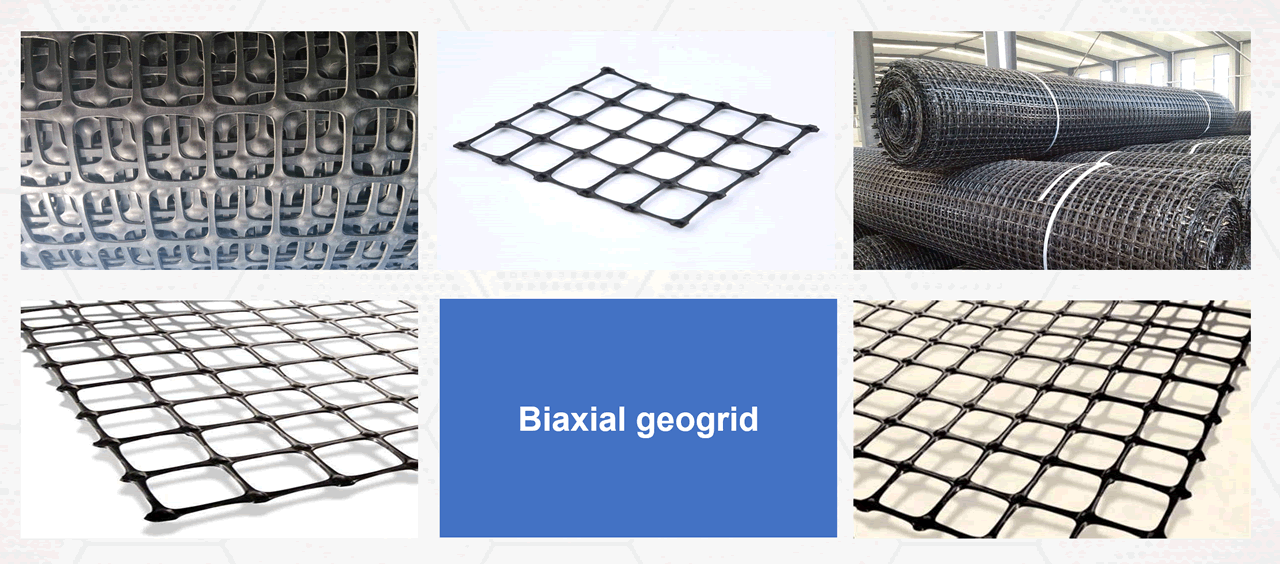
Specification Items | TGSG15-15 | TGSG20-20 | TGSG25-25 | TGSG30-30 | TGSG35-35 | TGSG40-40 | TGSG45-45 | TGSG50-50 | TGSG55-55 |
longitudinal tensile strength≥(kNm) | 15 | 20 | 25 | 30 | 35 | 40 | 45 | 50 | 55 |
Transverse tensile strength≥(kNm) | 15 | 20 | 25 | 30 | 35 | 40 | 45 | 50 | 55 |
Longitudinal nominal elongation≤(%) | 15 | ||||||||
Lateral nominal elongation≤(%) | 13 | ||||||||
Tensile strength at 2% elongation in the longitudinal direction≥(MNm) | 5 | 7 | 9 | 10.5 | 12 | 14 | 16 | 17.5 | 20 |
Tensile strength at 2% lateral elongation≥(kNm) | 5 | 7 | 9 | 10.5 | 12 | 14 | 16 | 17.5 | 20 |
Tensile strength at longitudinal elongation of 5%≥(kNm) | 7 | 14 | 17 | 21 | 24 | 28 | 32 | 35 | 40 |
Tensile strength at a transverse elongation of 5%≥(kNm) | 7 | 14 | 17 | 21 | 24 | 28 | 32 | 35 | 40 |
Width of cloth(m) | 1-6 | ||||||||
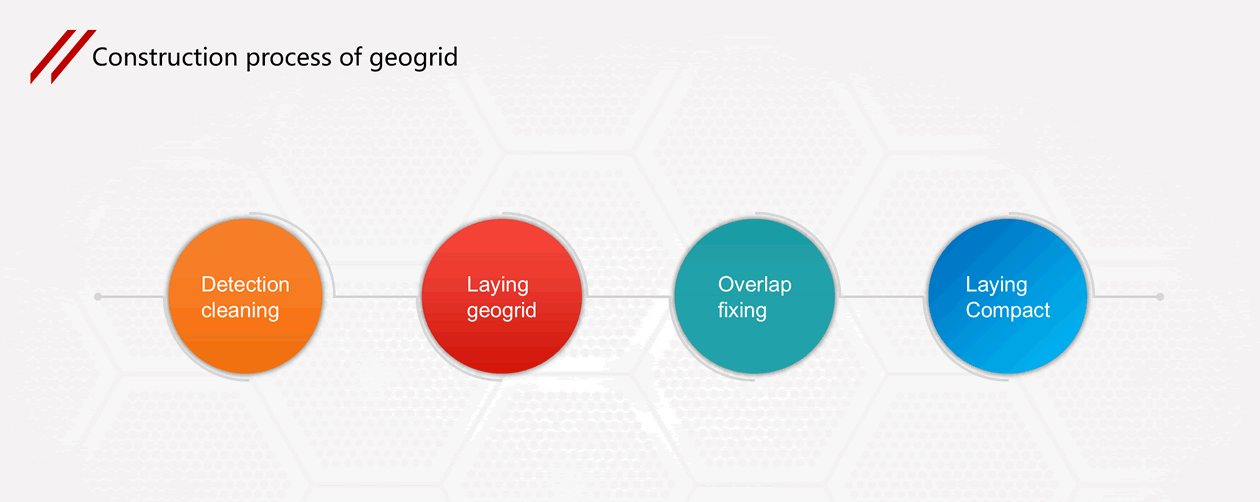
1. Used to increase the bearing capacity of the road (ground) foundation and extend the service life of the roadbed.
2. Used to prevent road (ground) collapse or cracks, and to maintain a beautiful and tidy ground.
3. Used for convenient construction, time-saving, labor-saving, shortened construction period, and reduced maintenance costs.
4. Used to prevent cracks in culverts.
5. Used to enhance soil slopes and prevent soil erosion.
6. Used to reduce the thickness of the cushion layer and save costs.
7. A stable green environment used to support slope planting with grass mesh mats.
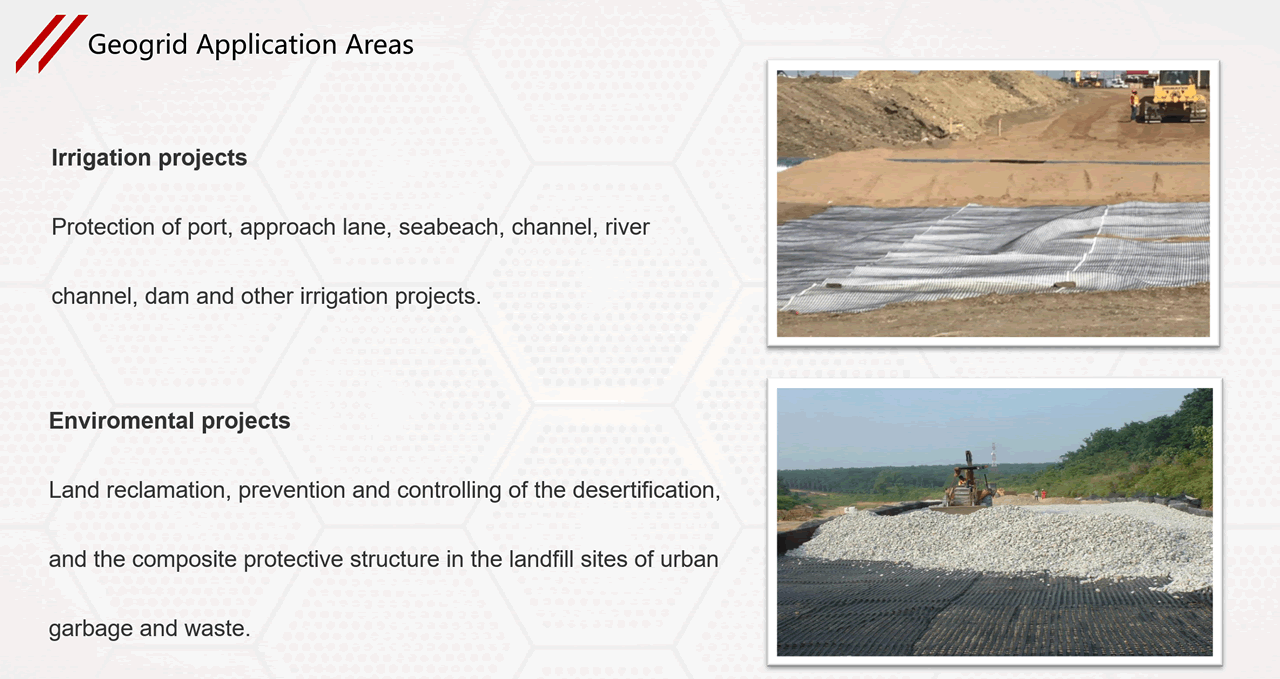
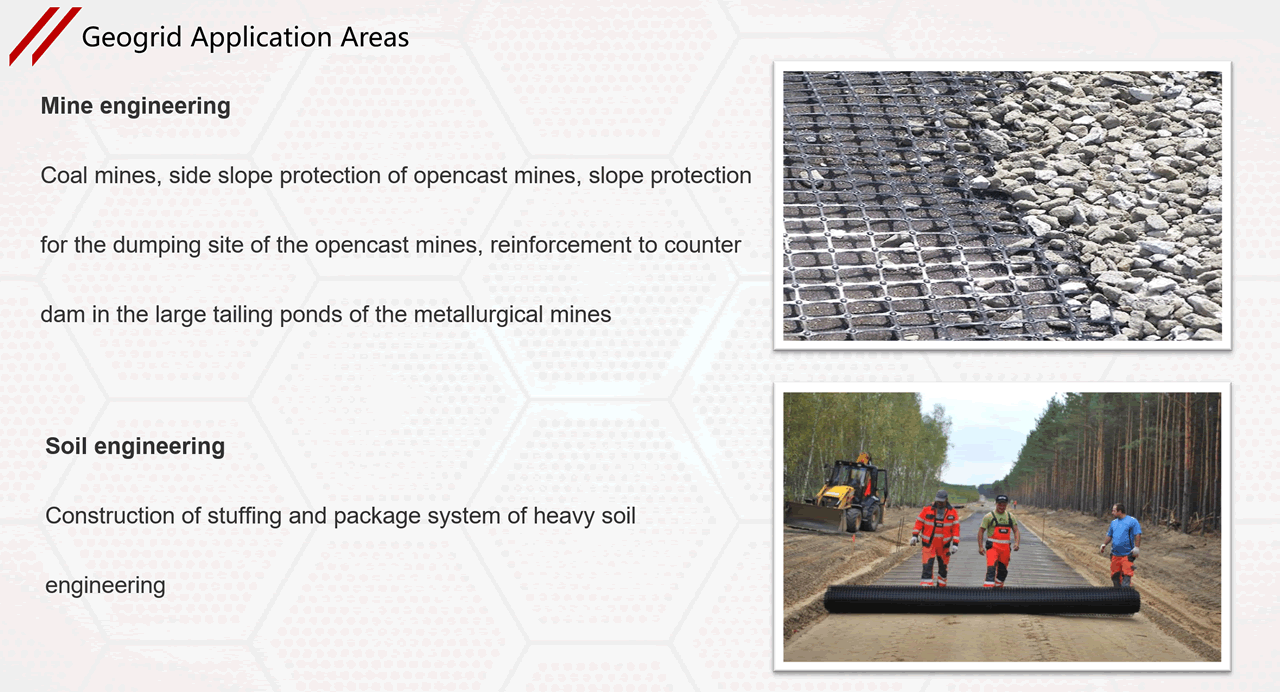
Excavate the foundation bed, set up a sand cushion layer, roll it into a platform, and lay a grid. The vertical axis should be consistent with the main force direction, with a longitudinal overlap of 15-20cm and a transverse overlap of 10cm. The overlap should be tied with plastic tape and fixed to the ground with U-shaped nails every 1.5-2m on the laid grid. The laid geogrid should be backfilled with soil in a timely manner, and the number of layers of the laid geogrid depends on the technical requirements.
technological requirements
The paving surface of the geogrid should be relatively flat. After the acceptance of the paving layer, in order to prevent longitudinal skewness, white lines or hanging lines should be drawn on the paving layer according to the width to start paving. Then, the end of the geogrid should be fixed with iron nails (8 nails per meter width, fixed evenly).
After fixing the end of the grille, use a paving machine to slowly pull the grille forward, manually tighten and straighten it every 10 meters until one roll of grille is laid, and then lay the next roll. The operation is the same as before.
After laying a roll, use a roller to roll it once from the starting point towards the forward direction.
Laying: The length of the section to be laid is measured by the roll length. After the section to be laid with the grid is fully filled, the overall quality of the laying is checked again, and then the next section is laid. When laying the next section, the grid can be overlapped with a length of 10-15CM and fixed with iron nails or wooden wedges before continuing to lay the second section in the forward direction. By analogy, the operational requirements are the same as before.
Previous : Uniaxial Geogrid
Next:Polyester geogrid
Hot Keywords:GeocellGeogridGeotexileGeocompositeGeomatGeomembrance